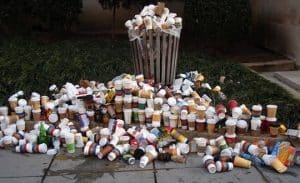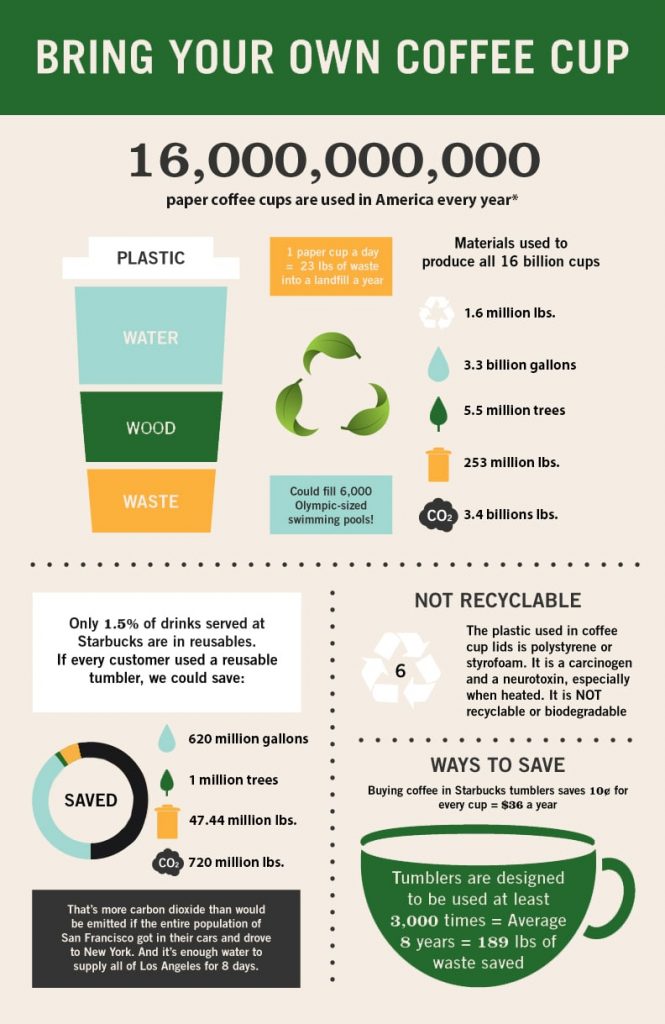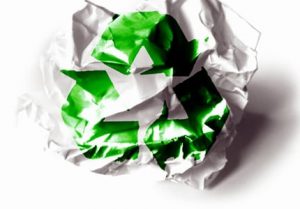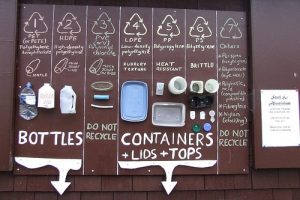Today is Earth Day 2015, and a good time to reflect on our consumption and waste. While it’s important to modify our personal habits, it is equally important to revise habits in the workplace. In our work as an environmental engineering firm, Tata & Howard constantly aims to incorporate sustainable initiatives and green technology into our design and services. And, because we believe that the long-term success of environmental activism will require small but significant changes from the majority of people, we also incorporate green initiatives in our day-to-day office activities.
 In years past, we have instituted paper, battery, and toner recycling programs, and we have eliminated disposable water bottles by installing plumbed water coolers that utilize public water. This year, we elected to eliminate disposable cutlery and drinkware from our offices in an effort to reduce our collective carbon footprint. In addition, all employees are encouraged to swap out disposable coffee-to-go cups for reusable tumblers when visiting our beloved Starbucks or Dunkin’ Donuts.
In years past, we have instituted paper, battery, and toner recycling programs, and we have eliminated disposable water bottles by installing plumbed water coolers that utilize public water. This year, we elected to eliminate disposable cutlery and drinkware from our offices in an effort to reduce our collective carbon footprint. In addition, all employees are encouraged to swap out disposable coffee-to-go cups for reusable tumblers when visiting our beloved Starbucks or Dunkin’ Donuts.
First, let’s look at some fast facts on disposable coffee cups:
- Hot paper and Styrofoam cups used at places like Starbucks and Dunkin’ Donuts are not recyclable.
- We throw away 58 billion cups per year.
- It takes 20 million trees and 12 billion gallons of water to produce the materials for the cups.

And that’s just cups. Add to that the billions of plastic utensils and, well…you get the point. In fact, Americans toss out enough paper and plastic cups, forks, and spoons every year to circle the equator 300 times. So, in celebration of Earth Day 2015, we whisked away all disposable drinkware and utensils, and asked employees to bring in their own reusable drink glass, coffee mug, and personal set of silverware for in-office use. Don’t worry: employees who forget their cutlery or drinkware on a given day won’t be out of luck — but they will be out $1.00, which is what it will cost them to “buy” a disposable fork or cup. All monies collected in this way will be donated to Trees, Water & People, whose mission is to improve people’s lives by helping communities protect, conserve, and manage the natural resources upon which their long-term well-being depends. Believe it or not, $1.00 is enough to plant ten trees! To encourage full participation, Tata & Howard is offering a prize for the most creative mug or glass, and the winner will be announced on Friday afternoon, April 24.

Tata & Howard has also formed a company-wide Green Committee as well as appointed Green Ambassadors, who are green representatives at each office. These individuals are hard at work coming up with additional ways to “green up” our offices. Some ideas have included implementing formal single stream recycling programs, generating less paper waste by going paperless when possible and always printing double-sided, participating in Ride-Your-Bike-to-Work-Weeks and carpooling, and recycling or replacing K-Cups. The committee will be meeting on an ongoing basis and will be implementing new green initiatives throughout the year. For some inspiration, we looked through some fast facts, and were surprised by what we found:
Waste:
- The garbage in a landfill stays for about 30 years.
- 84 percent of all household waste can be recycled.
- By reducing our waste 1% per year and recycling and composting 90% of our discards by 2030, we could save 406 megatons of carbon dioxide equivalent every year. This is the equivalent to shutting down 21% of our nation’s coal-fired power plants.
Aluminum Cans:
- Five billion aluminum cans are used each year.
- In America, 1,500 aluminum cans are recycled every second.
- Recycling an aluminum soda can saves 96% of the energy used to make a can from ore, and produces 95% less air pollution and 97% less water pollution.
- Throwing away one aluminum can wastes as much energy as if that can were 1/2 full of gasoline.
Paper:
 Each ton of recycled paper can save 17 trees, 380 gallons of oil, three cubic yards of landfill space, 4000 kilowatts of energy, and 7,000 gallons of water. This represents a 64% energy savings, a 58% water savings, and 60 pounds less of air pollution.
Each ton of recycled paper can save 17 trees, 380 gallons of oil, three cubic yards of landfill space, 4000 kilowatts of energy, and 7,000 gallons of water. This represents a 64% energy savings, a 58% water savings, and 60 pounds less of air pollution.- The 17 trees saved above can absorb a total of 250 pounds of carbon dioxide from the air each year. Burning that same ton of paper would create 1500 pounds of carbon dioxide.
- The construction costs of a paper mill designed to use waste paper is 50-80% less than the cost of a mill using new pulp.
- The amount of wood and paper we throw away is enough to heat 50 million homes for 20 years.
- Approximately one billion trees worth of paper are thrown away every year in the U.S.
- Almost 90% of cardboard is recycled but only about 50% of printing and writing paper is recycled.
- The average American uses seven trees a year in paper, wood, and other products made from trees. This amounts to about two billion trees per year.
- We throw away more than 60 million plastic bottles a day.
- Most families throw away about 88 pounds of plastic every year.
- Every year in the U.S. nearly 200 billion beverage containers are sold, two-thirds of which are landfilled, incinerated, or littered
And that’s just the tip of the iceberg. Mindfulness of our personal and corporate waste needs to become of a priority, and while it isn’t feasible to completely change our habits overnight, it is entirely possible to improve our carbon footprint by implementing small, sustainable changes over time. Every small step helps, and if we all work together on taking those small steps, we will soon find we’ve collectively run a marathon towards improving the health of our world. Won’t you join us?
Happy Earth Day 2015!

